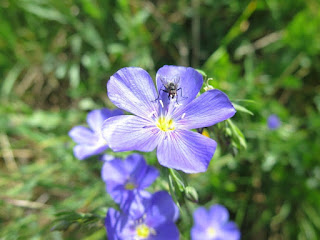by Øystein H. Opedal
Plant-pollinator
interactions provide
ideal opportunities for understanding
the mechanisms of
natural selection
Since Darwin’s time,
biologists have sought to quantify the strength and shape of natural selection
acting on species. Increasingly sophisticated analytical methods now allow
quantifying patterns of selection in diverse situations. However, while the
strength of selection as such is increasingly well understood, the actual
causes of selection are more elusive. Importantly, knowledge of how and when
selection will vary is key to making predictions about how natural populations
will respond to changes in their environments, such as climate warming or changes
in the assemblages of interacting species (e.g. pollinators).
Plant-pollinator interactions provide excellent opportunities for understanding the extent and causes of variation in selection. It is well established that much of the incredible diversity of flowers across flowering plants is causes by adaptation to diverse animal pollinators. If general patterns of variation in the selection mediated by pollinators on flower morphology can be identified, there is hope that we can forecast how plants will adapt to changes in their pollinator assemblages, including ongoing pollinator declines.
In this paper, I argue that a satisfactory understanding of natural selection requires a functional-mechanistic understanding of the selective process, such as whether pollinator-mediated selection relates to the attraction of pollinators or the efficiency of pollen transfer, and which specific floral characters mediate these effects. Through examples from the literature, I demonstrate that such knowledge is abundant, and that much of the observed variation in selection can be explained by consideration of the functional roles of each floral character.
Another important insight from this work is that detecting relationships between local pollinator assemblages and the selection they mediate require careful consideration of measurements and their meaning, aspects that are often taken too easy in studies of selection.
The conclusions of this synthesis appears to be good news for our ability to forecast how plants adapt to changes in their pollinator assemblages. However, several issues require further investigation, including whether patterns of variation in selection and selection-environment relationships detected in plant species pollinated by a few ‘specialized’ animals (e.g. hummingbirds or long-tongued moths) also extend to plant species visited by diverse assemblages of ‘generalized’ animals (e.g. flies and honeybees).
Read the scientific publication in JPE.


No comments:
Post a Comment